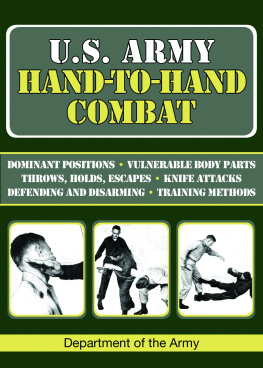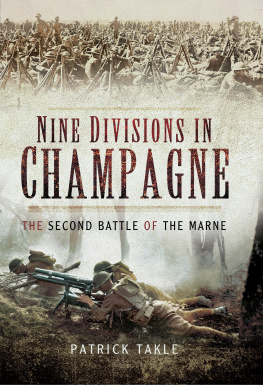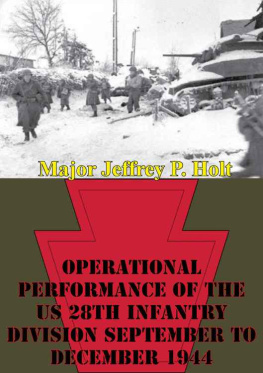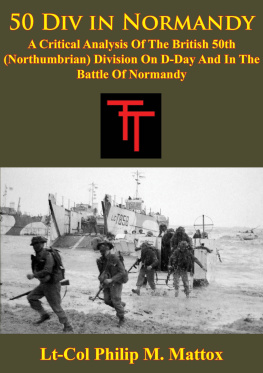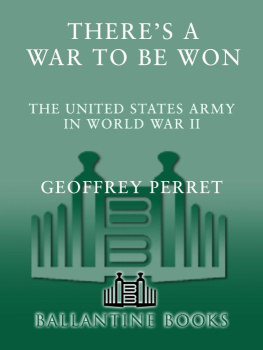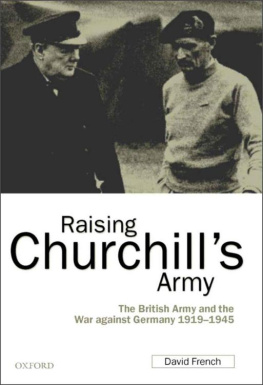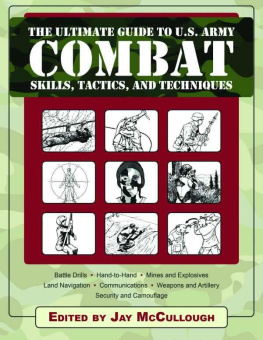
This edition is published by PICKLE PARTNERS PUBLISHINGwww.picklepartnerspublishing.com
To join our mailing list for new titles or for issues with our books picklepublishing@gmail.com
Or on Facebook
Text originally published in 1963 under the same title.
Pickle Partners Publishing 2015, all rights reserved. No part of this publication may be reproduced, stored in a retrieval system or transmitted by any means, electrical, mechanical or otherwise without the written permission of the copyright holder.
Publishers Note
Although in most cases we have retained the Authors original spelling and grammar to authentically reproduce the work of the Author and the original intent of such material, some additional notes and clarifications have been added for the modern readers benefit.
We have also made every effort to include all maps and illustrations of the original edition the limitations of formatting do not allow of including larger maps, we will upload as many of these maps as possible.
SEARCHING FOR COMPETENCE: THE INITIAL COMBAT EXPERIENCE OF UNTESTED U.S. ARMY DIVISIONS IN WORLD WAR II A CASE STUDY OF THE 90 TH INFANTRY DIVISION, JUNEJULY 1944
Major Benjamin L. Bradley
United States Air Force
TABLE OF CONTENTS
Contents
TABLE OF CONTENTS
EXECUTIVE SUMMARY
Thesis: The initial combat experience of the 90 th Infantry Division in World War II demonstrates the leadership and training problems faced by many new divisions throughout the war.
Discussion: Like all newly activated World War II Divisions, the 90th had a turbulent two-year training period fraught with problems of resources and personnel. During the interwar years, the Armys readiness was allowed to stagnate below such an acceptable level that when crisis called there was little to build upon. Consequently, the larger priority of rapidly fielding 90 divisions outweighed considerations for how well those divisions were trained. Thus, the 90 th Division was forced into combat by the exigencies of war with many factors working against it: untested officers, unfamiliar doctrine, limited training on advanced combat skills, and the detrimental effects of constant personnel turnover, including commanders.
As the 90th went ashore on Normandy, a period of ineffectiveness ensued as soldiers were forced to learn the lessons of training under fire and unsuccessful leaders were replaced. Furthermore, the 90 th Divisions period of ineffectiveness seemed extraordinary because it occurred under the spotlight of the Normandy invasion where insufficient planning for the difficulties of hedgerow combat severely slowed the expected pace of advance. Undoubtedly, the performance of the 90 th Divisions senior leadership was abysmal, but its uncoordinated attacks were the product of training deficiencies experienced by all new divisions. Additionally, critical evaluation reveals the 90ths early contribution much higher than historically credited and far from the total failure some have labeled it.
Unfortunately, the high casualty rate of combat on Normandy and the negative impact of replacements on operational effectiveness was more than the division could endure. Despite the need to rest and reset after its bloody battle for Monte Castre, the 90 th Division was tasked to eradicate a salient centered in the town of St. Germain. The result was disastrous and forever marked the division as a less well-trained and lead outfit than any other. However, the experience of many other divisions shows the 90th was not the only one that endured the failures of training and leadership on the battlefield.
Conclusions: The plight of the 90 th Division is illustrative of the multitude of problems overcome by newly formed American divisions and the entire U.S. Army during World War II. The division was not significantly different than many others who also stumbled in their initial actions. Circumstances on Normandy never allowed adequate time for the division to reset from its normal initial failings. The experience of the 90 th Division illuminates much about the importance of training continuity and the difficulties of rapidly expanding the military in times of national crisis. Furthermore, it highlights the need to maintain and continue to develop a highly trained corps of regular, reserve, and national guard officerseven in times of peace.
LIST OF ILLUSTRATIONS
Figure 1: The 90 th Division Patch.
Figure 2: Organization Chart, 90 th Infantry Division in WWII.
Figure 3: Major General Henry Terrell, Jr.Commander, March 1942January 1944.
Figure 4: Brigadier General Jay W. MacKelvieCommander, 23 January13 June 1944.
Figure 5: Overview of the D-Day Landings.
Figure 6: First Attacks by the 90th Division, 10-13 June 1944.
Figure 7: Attack to Cut the Cotentin Peninsula, 10-18 June 1944.
Figure 8: VIII Corps Attack in the Vicinity of Mont Castre, 3-7 July 1944.
Figure 9: VIII Corps Front, 8-15 July 1944.
Figure 10: First Army Front Prior to Operation COBRA, 21 July 1944.
Figure 11: The 90th Divisions Attack on St. Germain, 22-23 July 1944.
Figure 12: VIII Corps Advance in the Vicinity of Monte Castre, 3-28 July 1944.
PREFACE
I commenced this research in an effort to learn more about my grandfathers experiences during World War II. William J. Duck Bradley, Jr., or Pop Pop as I called him, was a voluble man, but he rarely discussed his wartime experiences. Unfortunately, the time to ask questions ended with his passing in 1998 and the answers offered by official military personnel records were lost in a fire at the National Archives in St. Louis. What little I know about his time in the U.S. Army was gleaned from faded separation papers found after his death. Pop Pop joined F Company, 359 th Infantry Regiment, 90 th Infantry Division as a replacement soldier in January 1945 during the Battle of the Bulge. He was wounded shortly thereafter (receiving a Purple Heart), recovered, and returned to duty. He went on to participate in the Rhineland and Central Europe campaigns before ending his 22 months of service with the army of occupation. Armed with this minimal knowledge, I set out hoping to find an appropriate research topic and unknowingly stumbled on the most controversial American division of the war.
In his 1951 memoirs, General Omar Bradley, Commander of the U.S. First Armylater 12 th Army Groupsaddled the 90 th Infantry Division with a dubious label. He wrote, Almost from the moment of its starting attack ... the 90 th Division became a problem division. {1} Years later, in his other work, A Generals Life , he remarked that the 90 th Division was the, worst-trained to arrive in the ETO [European Theater of Operations]. {2} Indeed, on the surface, the facts appear to support Bradleys statements. During its first 60 days of combat, the 90 th Division failed to seize three of its first four objectives, causing him to relieve two division commanders, an assistant division commander, and two regimental commanders. The First Army staff found the divisions performance so exasperating they recommended breaking it up as replacement troops for other divisions. Instead, Bradley opted for a third commander and provided him with the authority to replace an unlimited number of division personnel with anyone of his choosing. This, coupled with a transfer to Lieutenant General George S. Pattons Third Army and the breakout from the Norman hedgerows, produced a series of victories in the rapid advance across France. Morale among the troops soared and eventually, as Bradley recalled, the division developed into one of the finest in combat on the Allied front. {3}




